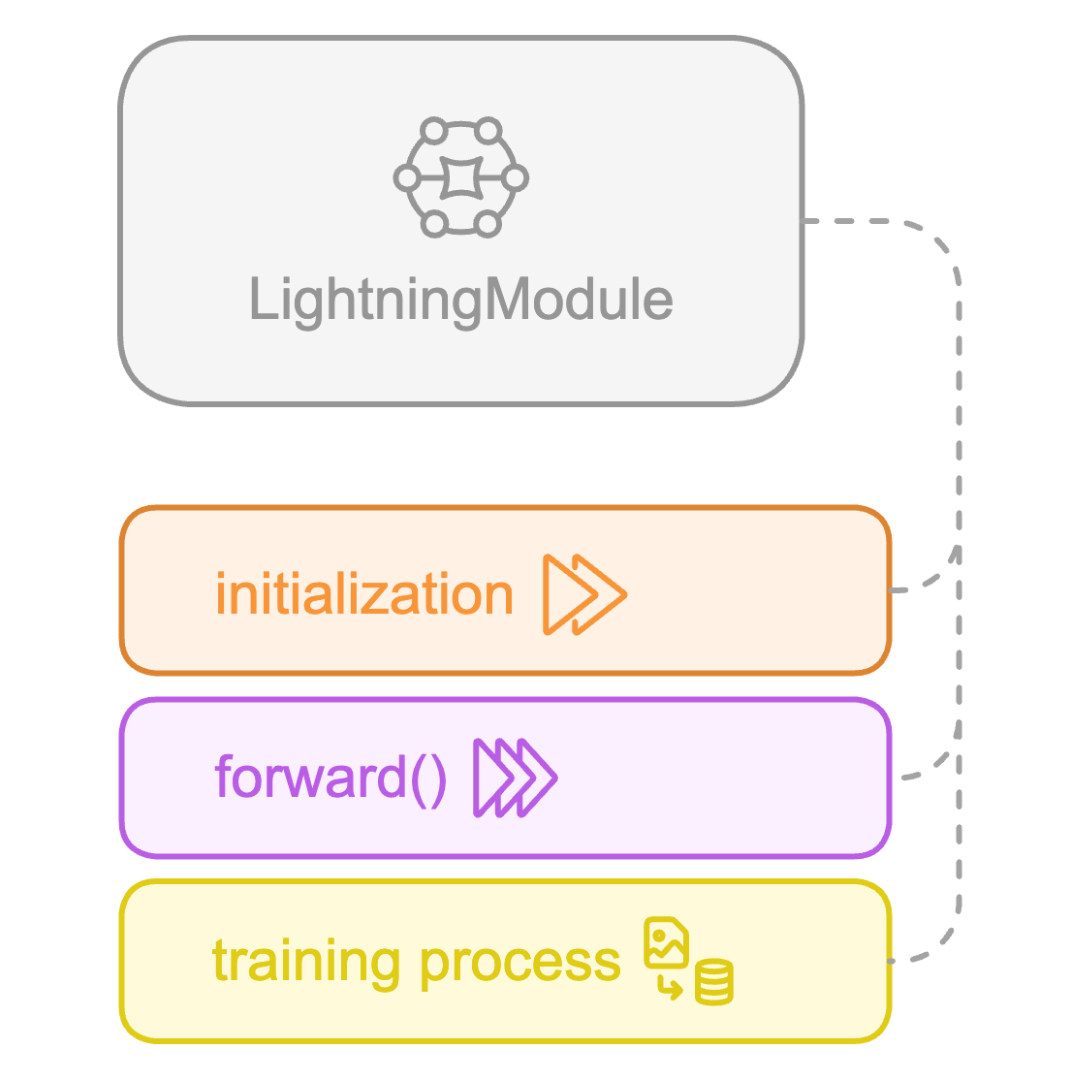Defining models with LightningModule
Scalable AI Models with PyTorch Lightning

Sergiy Tkachuk
Director, GenAI Productivity
LightningModule in focus
- Encapsulates your model architecture
- Organizes training logic into a single, manageable unit
- Blueprint that brings order and clarity to deep learning projects

Defining the init method
Key tasks:
- Model's initialization
super():- Automated handling of training loops
- Logging
- Checkpointing
- Model layers defined after initialization
- Modular and easy to maintain
import lightning.pytorch as pl import torch.nn as nn class ClassificationModel(pl.LightningModule): def __init__(self, input_dim, hidden_dim, num_class): # Initialize parent class super().__init__()# First layer self.layer1 = nn.Linear(input_dim, hidden_dim) # Activation function self.relu = nn.ReLU() # Output layer self.layer2 = nn.Linear(hidden_dim, num_class)
Implementing the forward method
Key steps:
- Define data flow through network
- Process input through layers sequentially
- Linear transformation
- Activation
- Last layer and output
import lightning.pytorch as pl import torch.nn as nn class ClassificationModel(pl.LightningModule): def __init__(self, input_dim, hidden_dim, num_class): ...def forward(self, x):x = self.layer1(x) # Pass inputx = nn.ReLU(x) # Apply activationx = self.layer2(x) # Compute outputreturn x # Return result
Example: classifying hand written digits
import lightning.pytorch as pl from torch.utils.data import DataLoader from torchvision.datasets import MNIST from torchvision import transformstransform = transforms.ToTensor() train_ds = MNIST(root='.', train=True, download=True, transform=transform) test_ds = MNIST(root='.', train=False, download=True, transform=transform) train_loader = DataLoader(train_ds, batch_size=64, shuffle=True) test_loader = DataLoader(test_ds, batch_size=64)model = ClassificationModel(input_dim=28*28, hidden_dim=128, num_class=10)trainer = pl.Trainer(max_epochs=3, accelerator='auto') trainer.fit(model, train_loader, test_loader)
Integrating the model with classification tasks
$$
- Focus on classification use case
- Entire flow within LightningModule
- Output raw outputs for softmax activation
- Integration with Lightning Trainer
class ClassificationModel(pl.LightningModule): def __init__(self, input_dim, hidden_dim, output_dim): super().__init__()self.hid = nn.Linear(input_dim, hidden_dim) self.out = nn.Linear(hidden_dim, output_dim)def forward(self, x):x = self.hidden(x) x = nn.ReLU(x) x = self.output(x)return x
Let's practice!
Scalable AI Models with PyTorch Lightning

